Explore the key differences between ABM and traditional marketing, focusing on tailored approaches and strategic engagement with high-value accounts.
Table of Contents:
1. The Limitations of Traditional Marketing
1.1 Mass Marketing Approach
1.2 Inefficiencies and Resource Allocation
2. Understanding Account-Based Marketing (ABM)
2.1 Definition and Strategic Importance
2.2 Key Principles of ABM
3. Strategic Differences: ABM vs. Traditional Marketing
3.1 Targeting Precision
3.2 Personalization at Scale
3.3 Data-Driven Decision Making
4. Measuring Success: Metrics that Matter in ABM
4.1 Key Performance Indicators (KPIs)
4.2 Feedback Loops and Continuous Improvement
5. Challenges and Considerations in Implementing ABM
5.1 Common Pitfalls
5.2 Solutions and Best Practices
Have you ever thought about why a particular B2B marketing strategy resonates with its target audience while some just don’t ring a bell? Probably the answer often lies in the approach that was taken specifically through a pivot from traditional marketing tactics towards Account-Based Marketing, or ABM. While most conventional approaches cast out wide nets, ABM focuses on precision targeting, which basically treats individual accounts as markets of their own. This strategic shift allows businesses to tailor their message and offer towards varying types of clients, thereby taking advantage of much deeper personal connections that convert into higher results. In the following pages we will delve into the core differences between ABM and traditional marketing in order to give you an idea of how this new approach can redefine your marketing endeavors. By the end, you will learn actionable knowledge for optimizing your strategy to boost engagement and success in today’s competitive B2B landscape.
1. The Limitations of Traditional Marketing
1.1 Mass Marketing Approach
Traditional marketing usually undertakes an approach that is mass, undifferentiated, targeting many people. What this usually does is result in generic messages, most of which do not hit the mark of a specific customer segment. According to HubSpot, only 20% of companies view their traditional marketing campaigns as highly effective.
1.2 Inefficiencies and Resource Allocation
In traditional marketing, companies spend huge amounts on campaigns without having any surety over the return that they will garner. The extensive shotgun approach can result in some heavy bills and fewer conversions. A MarketingProfs report states that out of marketers 41% say the biggest challenge for them is measuring ROI. The inefficiencies of traditional methods are exactly the reasons why the narrower approach of ABM is succeeding.
2. Understanding Account-Based Marketing (ABM)
2.1 Definition and Strategic Importance
ABM is an intensely targeted marketing strategy: it chases a specific set of accounts rather than casting a broad net. The laser-like focus allows the business to tailor an experience for a richer connection with the intended audience. According to SiriusDecisions, organizations who pursue ABM can benefit from an average increase in deal size of 171%.
2.2 Key Principles of ABM
Where ABM demands alignment between sales and marketing teams and strong understanding about target accounts, it will lead the firm towards more relevant and meaningful engagements with stakeholders at many levels through highly targeted campaigns.
3. Strategic Differences: ABM vs. Traditional Marketing
3.1 Targeting Precision
One of the most significant differences of ABM compared to traditional marketing targets the precision to the target. Contrary to the traditional approaches, which can be compared to a launched net, ABM focuses narrowly on a specific account. It is more of a targeted approach that enables businesses to use what they know about their preferred accounts so that every interaction with their account is relevant. In fact, according to Demand Gen Report, 63% of marketers say that ABM’s greatest benefit is the engagement of high-value accounts.
3.2 Personalization at Scale
ABM enables scaling personalization. With an abm content strategy designed towards specific accounts, it is possible to create highly relevant content that directly addresses the needs and pain points of your target audience. Case studies on some of the most prominent account-based marketing companies, such as Terminus and Engagio, show that personally targeted campaigns are far more effective at driving engagement rates.
3.3 Data-Driven Decision Making
Leveraging data analytics to inform marketing tactics allows for the use of ABM. Through an account-based marketing platform, engagement is tracked and measured, thus enabling campaigns to be optimized in real-time. This data-driven approach enables businesses to make better adjustments in their tactics based on what actually works, hence much better alignment with their target audience.
4. Measuring Success: Metrics that Matter in ABM
4.1 Key Performance Indicators (KPIs)
It is most likely that key performance indicators will serve as measures to assess the success of ABM campaigns. Instead of just considering the number of likes or shares, other metrics, including engagement rates, account penetration, and conversion rates, give an honest view of the performance of a campaign. LinkedIn disclosed in one report that 65% of marketers rely on engagement metrics as a leading indicator for measuring the success of ABM.
4.2 Feedback Loops and Continuous Improvement
Continuous improvement by creating feedback loops in ABM ensues, and regular assessment of campaign performance and seeking insight from various stakeholders allows businesses to perfect their strategies for best results.
5. Challenges and Considerations in Implementing ABM
5.1 Common Pitfalls
Not without its challenges, ABM transition does require a degree of effort to move on. Resource allocation could appear to be “split,” the sales and marketing teams may not be aligned, and no clear understanding of target accounts might have been obtained. All these can, nonetheless be saved early before investing in resources.
5.2 Solutions and Best Practices
Best practices usually often inter-depend the sales and marketing teams and make heavy use of robust analytics on data. Regular working or training sessions can also instill in teams what they need to execute effective ABM techniques.
Conclusion: The Future of B2B Marketing
Even as we reflect on the power of transform-through ABM versus old-school marketing, we have witnessed the difference in how a strategy behind ABM can change B2B relationships. The old-fashioned, often less effective forms of traditional marketing cannot suffice to serve the current business world, which its buyers are intelligent and better-informed. ABM speaks really deeply to the heart of the market, at an entirely different and deeper level with a much greater chance of conversion through personalization and focused engagement.
It’s fascinating to see the adaptation of organizations toward this model where collaboration between sales and marketing teams is encouraged, so that they are aligned toward shared goals, but the slant toward data-driven insight and corresponding adjustments in real-time enhance the campaigns’ effectiveness as much as it gets the organization agile to change.
This becomes a cultural shift within the organization toward the understanding of unique client needs rather than just a marketing approach, strategically strengthening customer relationships and positioning businesses for long-term success in an ever-changing marketplace. Changing times-these are exciting to watch how businesses will continue to innovate and refine their ABM strategies to meet the challenges ahead.
In other words, adopting ABM is no option but a must for B2B businesses to survive in a competitive marketplace. It will represent the right engagement and strategic personalization over mass marketing that has been used for centuries.
Discover SalesMarkBlog for Strategies That Propel Your Business Forward!





